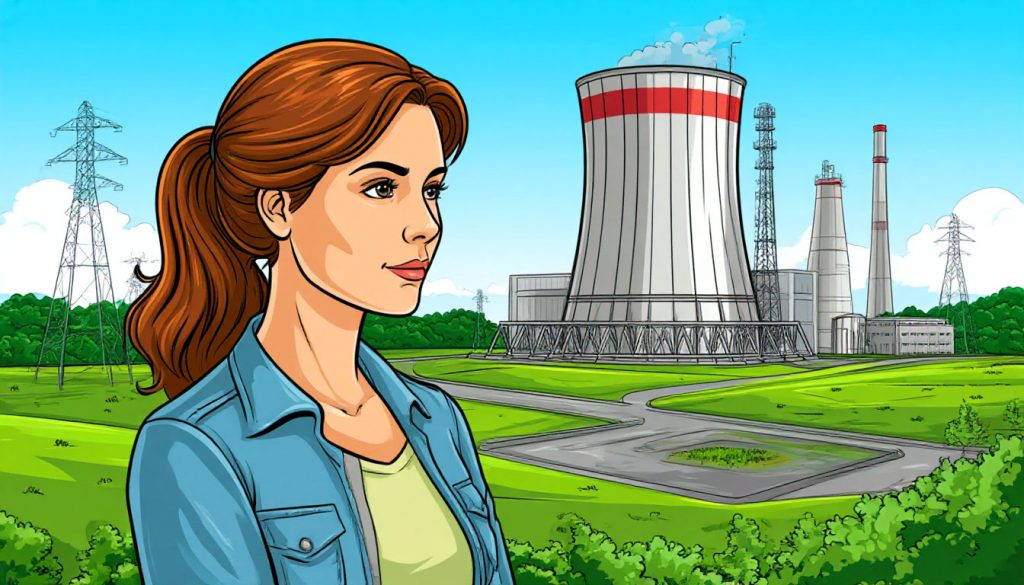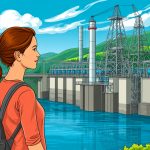Nuclear power plants generate electricity by harnessing the energy released from splitting atoms in a process called nuclear fission. Unlike fossil fuel plants, they do not burn anything, which means they produce electricity with low carbon emissions. Today, nuclear energy supplies about 10% of the world’s electricity and plays an important role in the transition to cleaner energy sources.
How Nuclear Power Plants Work
At the heart of every nuclear power plant is a nuclear reactor, where the fission process takes place. The fuel commonly used is uranium-235, a radioactive element.
When uranium atoms are split, they release enormous amounts of heat. This heat boils water, creating steam that turns turbines, which spin generators to produce electricity.
The key components of a nuclear plant include:
- Reactor core – where fission occurs
- Control rods – inserted to absorb neutrons and regulate the reaction
- Coolant – usually water, used to transfer heat
- Containment structure – a thick concrete and steel dome that prevents radiation leaks
Advantages of Nuclear Power
- Low greenhouse gas emissions: No CO₂ is produced during normal operation
- High efficiency: A small amount of fuel can produce a large amount of energy
- Reliable: Nuclear plants provide a steady power supply, unlike solar or wind
- Space-saving: Nuclear facilities produce more energy using less land
Because of these benefits, nuclear energy is considered a strong complement to renewable sources.
Risks and Challenges
Despite its benefits, nuclear energy presents several concerns:
- Radioactive waste: Remains dangerous for thousands of years and requires secure storage
- Accidents: Although rare, events like Chernobyl and Fukushima highlight the risks of radiation leaks
- High cost: Building and maintaining nuclear plants is expensive and time-consuming
- Nuclear proliferation: Technology used for energy can potentially be used for weapons
Nuclear Energy and the Future
New designs such as small modular reactors (SMRs) and fusion reactors are being developed to improve safety, reduce waste, and lower costs. Many countries are reconsidering nuclear energy as part of their decarbonization strategies, especially as climate change worsens.
Public debate continues, but many experts agree that nuclear power will remain an important part of the future global energy mix.
Glossary
- Nuclear fission – the splitting of atomic nuclei to release energy
- Uranium-235 – a radioactive isotope used as fuel in nuclear reactors
- Turbine – a machine that rotates when driven by steam or gas to generate electricity
- Containment structure – a protective enclosure to contain radioactive materials
- Radioactive waste – byproducts from nuclear reactors that remain hazardous
- Fusion – an alternative process of combining atoms


